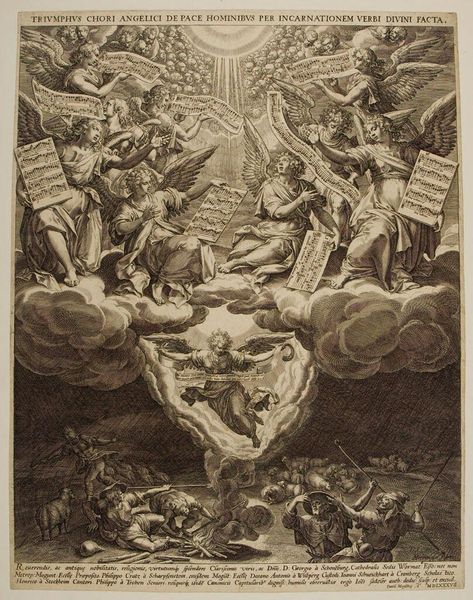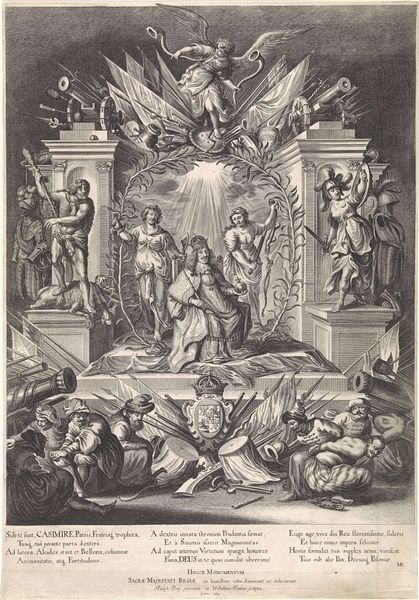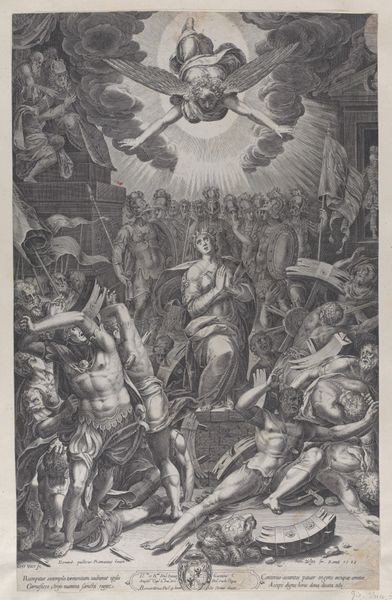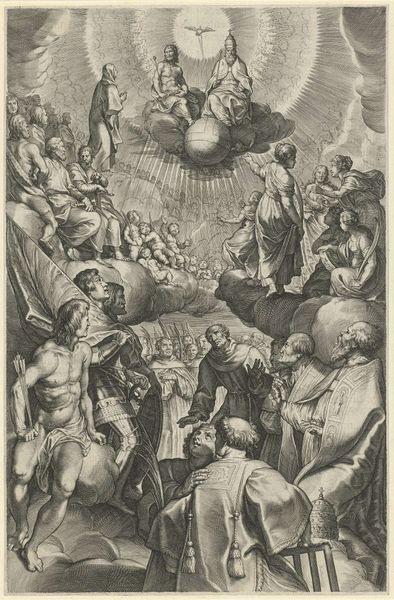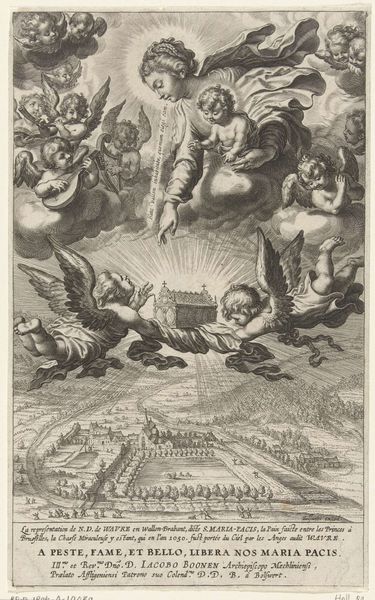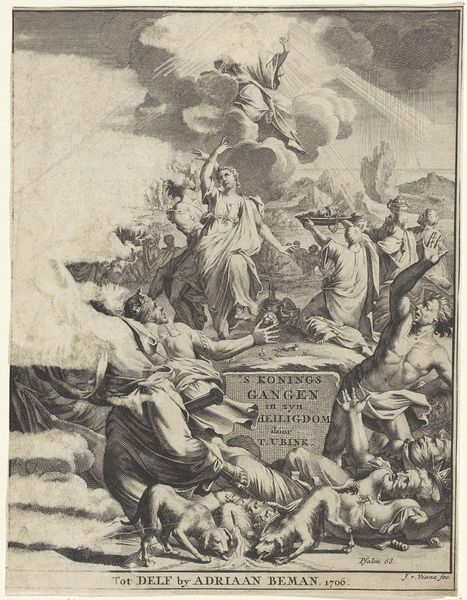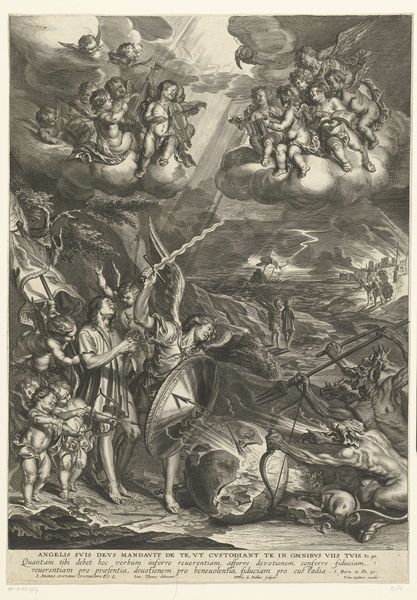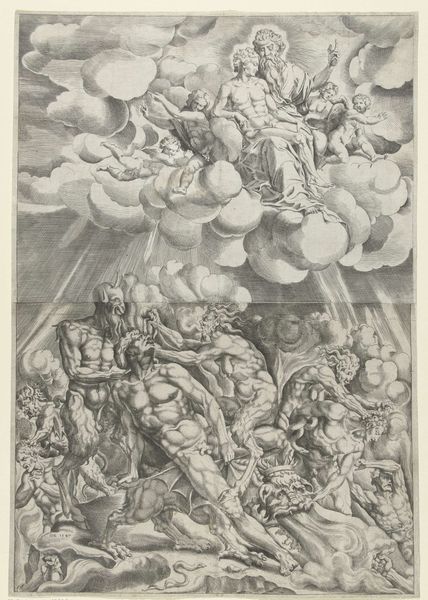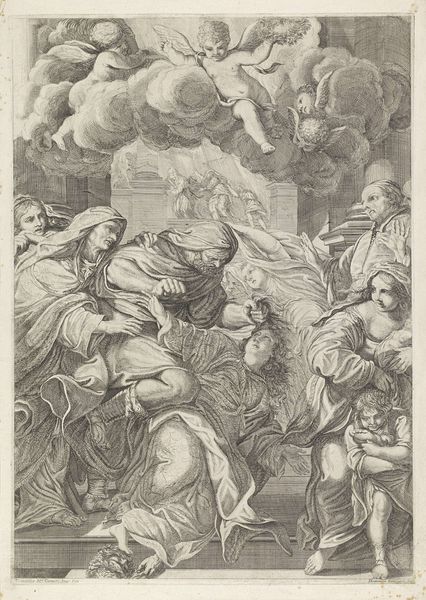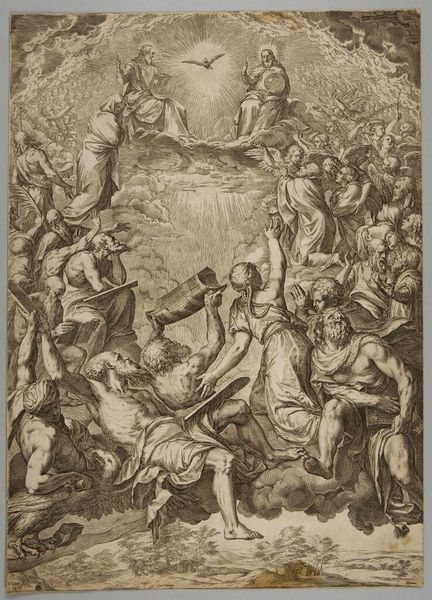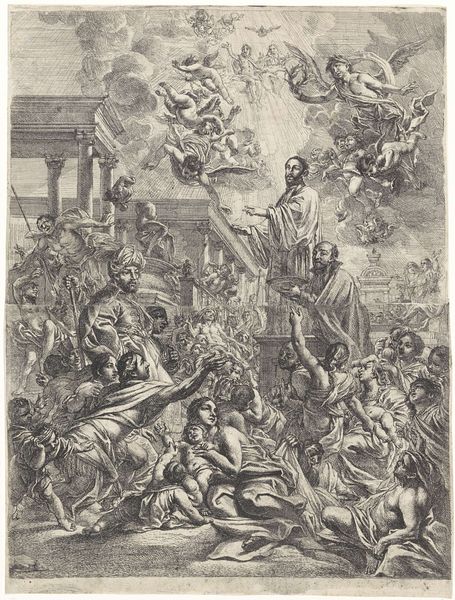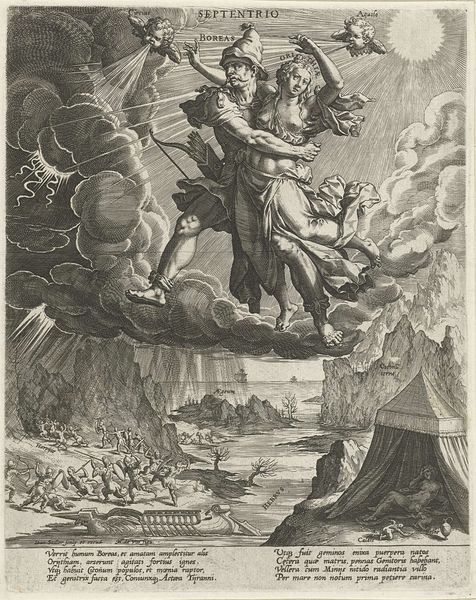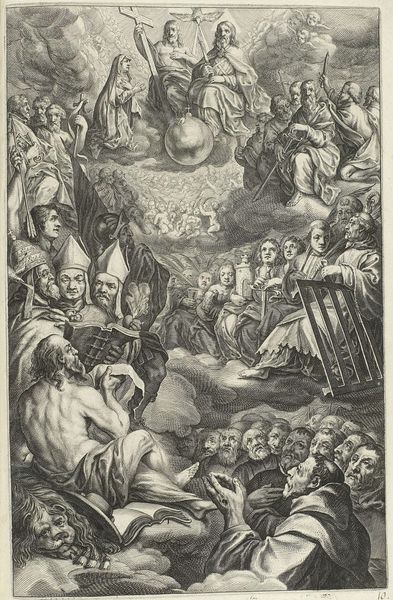
print, engraving
#
allegory
# print
#
old engraving style
#
figuration
#
line
#
history-painting
#
northern-renaissance
#
engraving
Dimensions: height 390 mm, width 295 mm
Copyright: Rijks Museum: Open Domain
Curator: The "Annunciation to the Shepherds by Angelic Choirs," an engraving completed in 1587 by Johann Sadeler I, now resides in the Rijksmuseum. Look at how this intricate print unfolds a story of the divine meeting the pastoral. What is your first reaction to the composition? Editor: Overwhelmed, yet strangely comforted. The scale feels vast, with heaven breaking open, but the line work and dense layering also feel meticulously controlled and intimate, like a miniature drama playing out on a grand stage. It seems like organized chaos. Curator: The composition employs a strong vertical axis. From the heavenly host at the top to the startled shepherds below, a clear hierarchy is established. Note the symbolic use of light emanating from above, illuminating the scene and drawing our eye through the narrative. How might we interpret that shaft of light, or that sense of illumination? Editor: Well, beyond the obvious religious connotations, that visual hierarchy interests me, particularly the shepherd’s reaction below: fearful and perhaps uncomprehending of this announcement. Is this division purely celebratory or a more critical commentary on social strata, the divide between the divine message and the lives of those who receive it? Are they really equipped to even comprehend what they're witnessing? Curator: Indeed, Sadeler's Northern Renaissance style integrates both detailed observation and symbolic representation. The angelic figures are rendered with classical grace, while the landscape shows attention to naturalistic detail typical of the era. We also should note the placards the angels bear: sheets of music. The announcement of peace delivered in glorious harmony. Editor: Those musical notations underscore the sense of order and divine harmony, contrasting rather sharply with the rustic, earthly chaos below. And I think that in terms of interpretation it’s difficult to not consider the implications of such strong hierarchies given the rising power of mercantile class in the North at this point, the religious wars – who got to receive heavenly grace? I am not sure the artwork gives any conclusive answers to these kinds of issues but that's okay too, right? Curator: Ultimately, Sadeler leaves us to contemplate the mysteries of faith, the power of divine intervention in the mundane, and the intricate tapestry of artistic expression. The details reveal much upon closer inspection. Editor: It's more than just a pretty picture; it's an invitation to engage with questions about belief, social structure, and artistic intention, which hopefully sparks necessary conversations, as well.
Comments
No comments
Be the first to comment and join the conversation on the ultimate creative platform.
